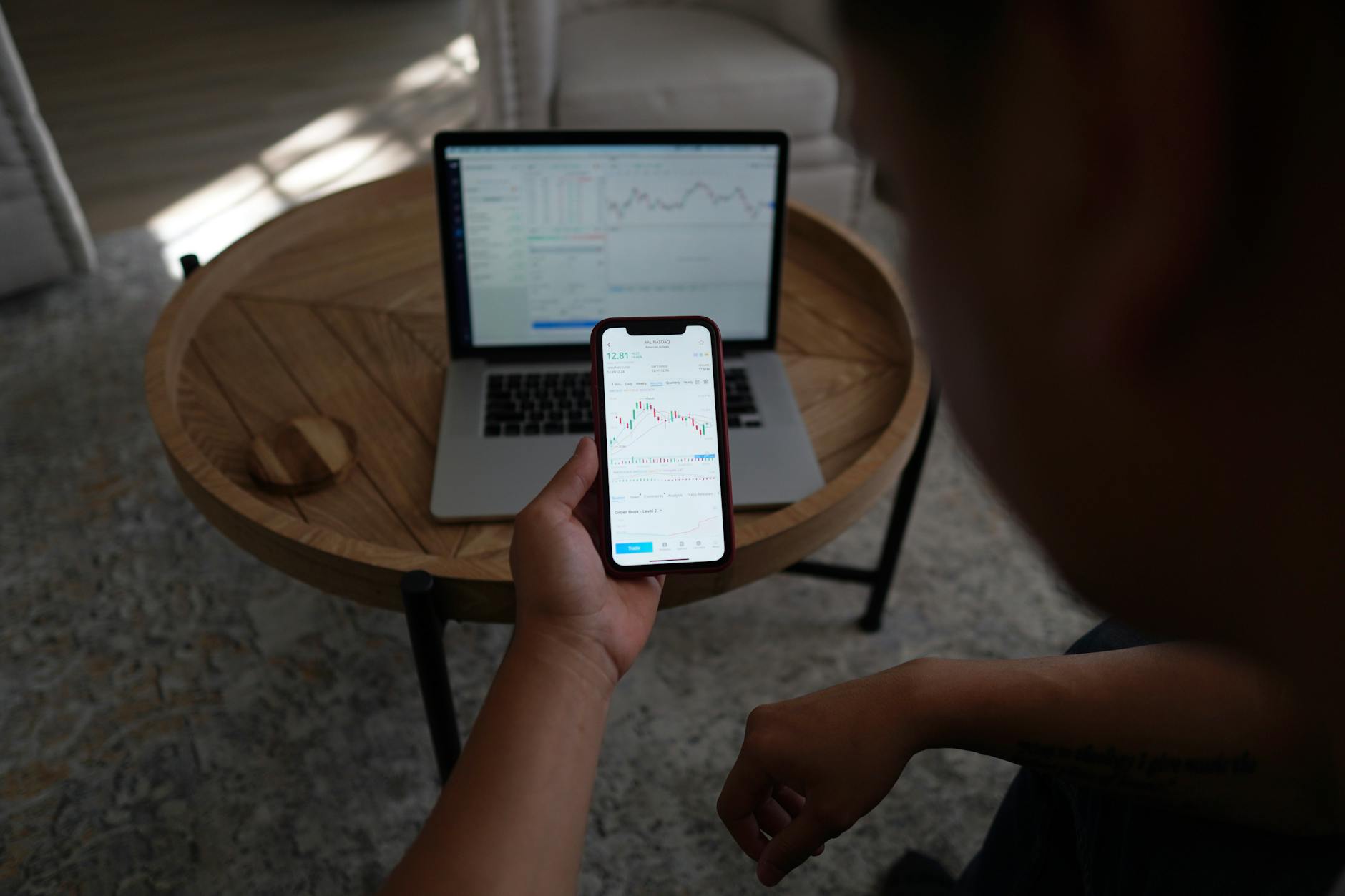Market movements aren’t just a matter of chance; they often follow predictable patterns. Technical analysis gives you the tools to decipher those patterns and make informed trading decisions. It’s about understanding the “why” behind the “what” in the market, turning speculation into strategic moves. I’m Steve, and I’m here to help you navigate those waters.
The Foundation: Understanding Charts and Trends
First things first: charts. They’re the battlefield where price action unfolds. Whether you’re looking at candlestick charts, bar charts, or line charts, they all tell the same story: the battle between buyers and sellers. The price goes up when buyers are in control, and it goes down when sellers are running the show. Recognizing the trend is your primary goal, your north star. Is the market trending upward, downward, or sideways? Knowing the trend is the first key to profitable trading.
Trendlines are a cornerstone of technical analysis. Draw a line connecting the higher lows in an uptrend or the lower highs in a downtrend, and you’ve got yourself a trendline. These lines aren’t magic, but they offer valuable support and resistance levels. Think of them as invisible guardrails, guiding the price movement. When the price bounces off a trendline, it reinforces the trend. If the price breaks through a trendline, it often signals a potential trend reversal. Remember, technical analysis isn’t about predicting the future; it’s about understanding the present and making educated guesses based on probability. As Investopedia explains, “Technical analysis is a trading discipline employed to evaluate investments and identify trading opportunities by analyzing statistical trends gathered from trading activity, such as price movement and volume.”
But, hey, don’t get overwhelmed by the details. Keep it simple at first. Master the basics of trend identification and you’ll be ahead of the curve. A solid grasp of charts will serve as your compass in the volatile world of finance. Always stay in the know of what you’re investing in, whether that be stocks, bonds, or other tradable assets.
Chart Patterns: Recognizing the Signals
Beyond trends, chart patterns offer invaluable insights. These patterns are formations that repeat across different markets and timeframes. There’s a treasure trove of them out there, but let’s start with the essentials. There are two main categories: reversal and continuation patterns. Reversal patterns signal a potential change in trend, while continuation patterns suggest the existing trend will keep on chugging along.
Head and shoulders patterns, for example, are a classic reversal formation. The head and shoulders top typically appears at the end of an uptrend, with three peaks: the left shoulder, the head (the highest peak), and the right shoulder. The pattern suggests that the uptrend is losing momentum and a downtrend may follow. Conversely, the inverse head and shoulders (head and shoulders bottom) signals a potential bullish reversal. These patterns may be the basis of a trading strategy, but they can also give you the foresight you need to either buy or sell accordingly.
Then you have continuation patterns. Flags and pennants are short-term patterns that suggest the current trend will resume after a brief consolidation. Think of them like a pause before the next surge. These patterns, such as double tops and double bottoms, can be used to solidify your analysis and refine your entries and exits. Mastering a few key patterns will give you a significant edge. As the U.S. Securities and Exchange Commission (SEC) suggests, understanding these signals is an important step towards making your own investment decisions.
Technical Indicators: Your Arsenal of Signals
Technical indicators are mathematical calculations based on a security’s price and volume. They act as a secondary confirmation tool, helping you to validate your chart analysis and confirm potential trading signals. They aren’t perfect, but they’re valuable tools in your arsenal.
One of the most popular indicators is the Moving Average (MA). A moving average smooths out price data by calculating the average price over a specific period. You can use different moving averages, such as the Simple Moving Average (SMA) and the Exponential Moving Average (EMA), to identify the direction of the trend and potential support and resistance levels. The concept is simple: If the price is above its moving average, it could be trending upward, and vice versa. The EMA is weighted more toward recent prices, making it more responsive to changes.
Other commonly used indicators include the Relative Strength Index (RSI) and the Moving Average Convergence Divergence (MACD). The RSI measures the magnitude of recent price changes to evaluate overbought or oversold conditions in the price of a stock or other asset. The MACD is a trend-following momentum indicator that shows the relationship between two moving averages of a security’s price. The MACD indicator is calculated by subtracting the 26-period exponential moving average (EMA) from the 12-period EMA. The result of that calculation is the MACD line. A signal line, which is usually a 9-period EMA of the MACD line, is then plotted on top of the MACD line, which can then be used to show potential buy and sell signals. The usefulness of these indicators depends on your trading style and the market conditions. Experiment, combine different indicators, and find what works best for you. Each indicator can have its pros and cons, which is why it’s always important to be informed.
Risk Management: The Unsung Hero
Technical analysis gives you the “what” and “when,” but risk management provides the “how.” Regardless of how skilled you are at reading charts, protecting your capital is non-negotiable. Risk management includes setting stop-loss orders, determining position sizes, and defining your risk-reward ratio. Never risk more than you can afford to lose, period.
Stop-loss orders are crucial for limiting potential losses. They automatically sell your position when the price reaches a predetermined level. Position sizing is about determining how much capital to allocate to each trade. A good rule of thumb is to risk no more than 1-2% of your total capital on any single trade. This strategy helps keep you in the game even when things go south. Setting your risk-reward ratio is essential. This measures the potential profit you can make compared to the potential loss you’re willing to take. Aim for a ratio of at least 2:1, meaning you aim to make twice as much as you risk. Every trade needs a plan. Don’t gamble – trade with a strategy.
Putting It All Together: A Step-by-Step Approach
So, how do you put all of this into practice? Here’s a simple step-by-step approach to get you started:
- Analyze the Trend: Identify the primary trend using trendlines and moving averages.
- Identify Patterns: Look for chart patterns, either reversal or continuation, that could confirm your trend analysis.
- Use Indicators: Use technical indicators, such as the RSI or MACD, to confirm your signals.
- Define Your Entry and Exit Points: Determine the specific levels at which you will enter and exit your trade.
- Set Stop-Loss Orders: Always set a stop-loss order to limit your potential losses.
- Manage Your Risk: Calculate your position size and adhere to your risk-reward ratio.
- Review and Adjust: Continuously review your trades and adjust your strategy as needed.
Remember, trading is a process, not a destination. There will be winners and losers. The key is to learn from every trade, adapt your strategy, and stay disciplined. It takes time and patience to become proficient, but the rewards are worth it. Also, don’t forget that a good cup of coffee can make the highs and lows that much more manageable. I couldn’t be on top of my game without my
While you’re at it, don’t let the chart patterns get you down. Sometimes, you just need a laugh to keep you from getting stuck in the weeds – or, heaven forbid, the dreaded “buy high, sell low” conundrum. Trading can be a battlefield, but having the right attitude, and the right mug, can make all the difference. Speaking of which, I’m gonna go pour myself a coffee.
So, grab yourself a sarcastic coffee mug, get your charts set up, and let’s get after it! See you on the battlefield.


